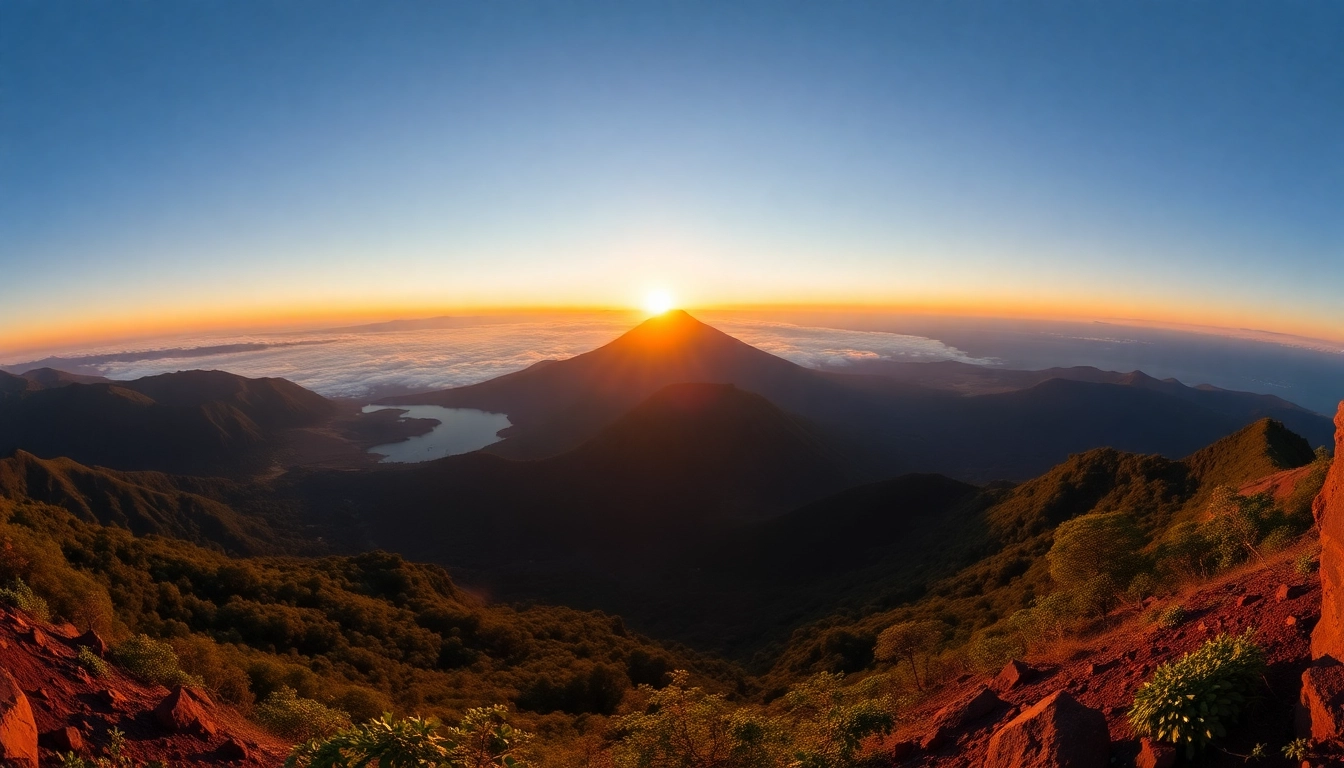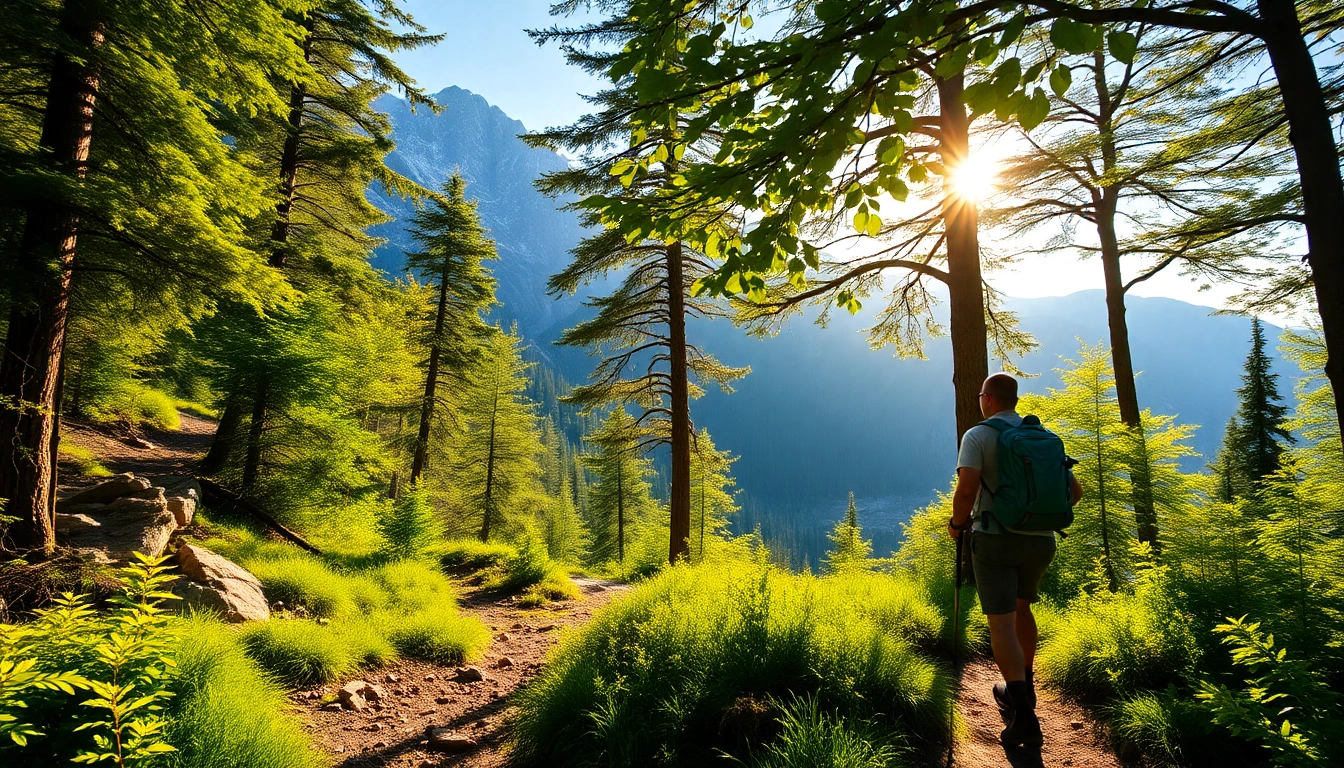Introduction to Mt. Rinjani and Its Significance
Majestically rising on the island of Lombok in Indonesia, Mt. Rinjani is not only an awe-inspiring natural landmark but also an active volcano with profound cultural, ecological, and recreational significance. Standing at an impressive elevation of 3,726 meters, it is Indonesia’s second highest volcano and a centerpiece of Lombok’s stunning landscapes. Its prominence extends beyond its physical height; Rinjani embodies the spiritual connection of local communities, a haven for biodiversity, and a sought-after destination for adventure seekers and nature lovers alike.
Geographical and Cultural Overview
Location and Physical Features
Located within the Rinjani Range in the northern part of Lombok, the mountain forms the core of Rinjani National Park, a UNESCO-declared biosphere reserve. The volcano comprises a central cone, Gunung Rinjani itself, along with the mighty Segara Anak Caldera, a massive volcanic crater filled with a crater lake. The caldera measures approximately 8 by 10 kilometers, harboring lush forests, hot springs, and picturesque waterfalls. The region’s diverse topography ranges from rugged volcanic terrain to verdant forests, hosting a wide array of flora and fauna.
Cultural Significance
For the Sasak people and other indigenous groups in Lombok, Rinjani holds a sacred place. It is embedded within local folklore, rituals, and spiritual practices. The mountain is believed to be the dwelling of ancestral spirits and gods, making it a focal point for religious ceremonies and traditional offerings. Several sacred sites and temples surround the mountain, emphasizing its spiritual resonance and cultural importance that has persisted for centuries.
Historical Eruptions and Activity
As an active volcano, Mt. Rinjani has experienced multiple eruptions, influencing regional history and shaping its physical landscape. Notably, a significant eruption occurred between October and December 2015, characterized by ash plumes reaching heights of 6 kilometers and lava flows that reshaped parts of the crater. These volcanic activities remind visitors and locals alike of the mountain’s dynamic nature, requiring continuous monitoring and respect for safety protocols. Scientific studies and volcanic monitoring programs are diligently conducted to forecast future eruptions and ensure visitor safety.
Why Mt. Rinjani Is a Must-Visit Mountain
Beyond its towering presence and geological features, Mt. Rinjani offers unparalleled experiences for travelers. Its breathtaking vistas, vibrant ecosystems, and the challenge of reaching its summit attract adventurers and nature enthusiasts worldwide. Trekking to Rinjani’s peak provides not only a physical challenge but also a profound sense of achievement and an intimate connection with nature. The surrounding national park also hosts an array of natural and cultural attractions, making Rinjani a multifaceted destination that combines adventure with cultural immersion.
Preparing for Your Mt. Rinjani Trek
Essential Equipment and Clothing
Preparing adequately for a Rinjani trek is critical. Due to the mountain’s elevation variability and unpredictable weather, proper gear is essential. Climbers should pack layered clothing, including moisture-wicking base layers, warm insulating jackets, and windproof outer shells. Lightweight, durable hiking boots with good ankle support are non-negotiable, alongside gloves, hats, and sunglasses to protect against sun and wind. Emergency gear such as headlamps, maps, and GPS devices also bolster safety, especially during night ascents or in case of inclement weather.
Best Times to Climb Mt. Rinjani
The optimal trekking seasons typically extend from April to November, coinciding with the dry season in Lombok. During these months, weather conditions favor clear skies and stable temperatures, allowing for safer and more enjoyable hikes. The high season peaks around July and August, when the weather is most predictable, and accommodation and guide services are more readily available. Avoid the rainy season (December to March), when heavy rainfall and thunderstorms can pose serious hazards for climbers.
Guides, Permits, and Safety Precautions
Hiring experienced local guides is vital due to Rinjani’s challenging terrain and unpredictable volcano activity. Guides provide safety oversight, navigation assistance, and cultural insights. Permits are legally required for trekking and can be arranged through authorized agencies or tour operators. It’s also essential to stay updated on volcanic activity reports and heed advisories from authorities. Equipping yourself with safety knowledge—including altitude sickness prevention and emergency response—is imperative for a successful ascent.
Trail Routes and Trekking Challenges
Sembalun vs. Senaru Routes
The two primary trekking routes into Rinjani are Sembalun and Senaru, each with distinctive characteristics. The Sembalun route, originating from the east, is longer but less steep, offering breathtaking panoramic views of the rugged volcanic landscape. Conversely, the Senaru route, starting from the north, is more direct and terrain slightly more challenging due to steeper ascents. Both routes cross through diverse ecosystems, including lush forests, crater lakes, and hot springs, offering a comprehensive wilderness experience.
Distance, Duration, and Altitude Tips
Typically, trekking to the summit takes about 2 to 3 days, depending on your pace and route choice. Sembalun Route covers approximately 27 kilometers, with an ascent that includes initial moderate slopes followed by steeper sections near the crater rim. Altitude-related challenges include thinner air and increased fatigue, making acclimatization crucial. Trekkers should plan sufficient rest days, hydrate adequately, and ascend gradually to minimize altitude sickness risk.
Common Difficulties and How to Overcome Them
Many climbers face hurdles such as fatigue, altitude sickness, unpredictable weather, and trail fatigue. To counter these, proper physical preparation before the trek is essential—cardio and strength training should be prioritized. During the trek, pacing is vital; taking regular breaks and maintaining hydration helps prevent exhaustion. Weather-related challenges can be mitigated with layered clothing and weatherproof gear. Having a knowledgeable guide can also provide critical support and reassurance in challenging situations.
What to Expect at the Summit and Around the Park
Unforgettable Views and Photography Spots
The panoramic vistas from Rinjani’s summit are second to none. On a clear day, you can view the surrounding islands, the vast Indian Ocean, and the crater lake, Segara Anak. Sunrise from the summit offers a surreal experience, with hues of orange and pink illuminating the sky. Natural photography spots include the crater rim, hot springs, and waterfalls within the national park, each providing breathtaking backdrops to capture memories of your adventure.
Wildlife, Flora, and Natural Attractions
Rinjani’s diverse ecosystems are home to unique flora and fauna. The park shelters endangered species such as the Rinjani monitor lizard, ebony trees, and orchids. The waterfalls within the park—like Tiu Kelep and Sendang Gile—offer serene natural retreats. The hot springs near Segara Anak provide relaxing thermal baths, adding to the therapeutic aspect of the park’s natural offerings. Birdwatchers can delight in spotting various endemic species, making every trek a rich ecological learning experience.
Cultural and Local Insights
Engaging with local communities enriches the trekking experience. The Sasak people preserve customs, traditional crafts, and ceremonies linked to the mountain. Visitors are encouraged to participate respectfully, perhaps visiting local villages for cultural exchanges or supporting community-based tourism initiatives. Exploring local markets and tasting Lombok’s authentic cuisine—such as ayam taliwang or spicy sambal—allows travelers to immerse in the vibrant local culture beyond the mountain’s footprints.
Post-Trek Celebration and Responsible Tourism
Leave No Trace & Ecotourism Practices
Preserving Mt. Rinjani’s pristine environment requires responsible tourism. Trekkers should follow leave-no-trace principles—packing out all waste, avoiding damage to flora and fauna, and sticking to established trails. Eco-friendly practices and minimizing carbon footprints are crucial for the park’s sustainability. Participating in conservation efforts or volunteering for reforestation projects can further ensure the preservation for future generations.
Local Community Support and Sustainable Travel
Supporting local communities by choosing eco-tourism-certified operators and guides fosters sustainable development. Purchasing local crafts, staying at community-managed lodges, and contributing to local economies ensure that tourism benefits the indigenous population. Promoting awareness about ecological and cultural conservation helps maintain Rinjani’s integrity amidst increasing tourist numbers.
Planning Your Next Adventure on Lombok
After conquering Mt. Rinjani, Lombok offers numerous other attractions including relaxing beaches, diving spots, surfing beaches, and picturesque islands like Gili Trawangan and Gili Air. Combining mountain trekking with coastal exploration creates a comprehensive, adventure-filled itinerary. Planning ahead with eco-conscious options and local guides guarantees not only a memorable trip but also a responsible one that respects Lombok’s natural and cultural treasures.

